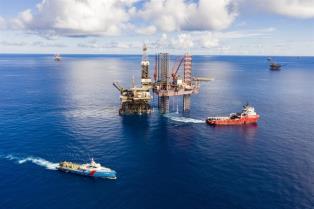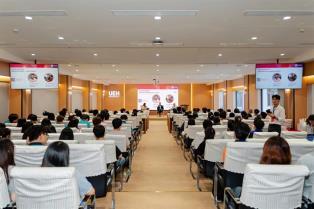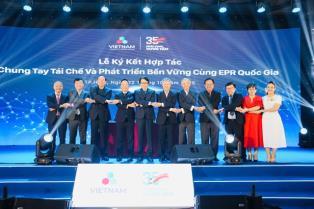Following its recent administrative merger, HCM City's Tân Phước Ward is emerging as a strategic location with all the conditions to become a leading logistics hub for the city and the southern key economic region.
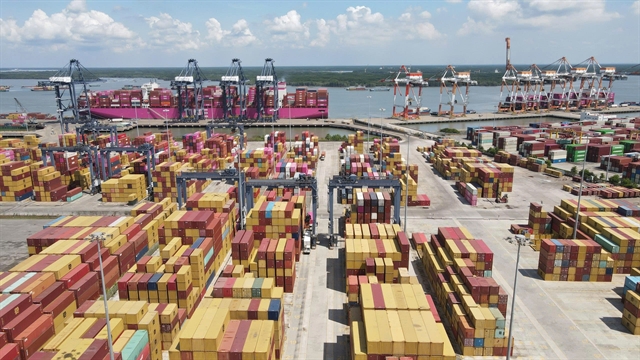
HCM CITY — Following its recent administrative merger, HCM City's Tân Phước Ward is emerging as a strategic location with all the conditions to become a leading logistics hub for the city and the southern key economic region.
With a unique “three-in-one” advantage — deep-water seaports, large-scale industrial zones, and digital transformation potential — Tân Phước is being positioned as a new nucleus in the city’s strategy to integrate urban, industrial, and modern logistics development.
Located along the Thị Vải River, one of the most important inland waterways in the Southeast region, Tân Phước enjoys excellent multimodal connectivity.
It links directly to key highways such as National Highway No. 51, the Biên Hòa–Vũng Tàu Expressway, the Cái Mép–Thị Vải inter-port road, and the planned Ring Road No.4 and Phước An Bridge.
The under-construction Long Thành International Airport in Đồng Nai Province is just over 40km away, further enhancing the area’s multi-transport network.
Currently home to 13 seaports and 16 inland ports, Tân Phước has rapidly become a key transit point for cargo not only in the city but also across the Southeast, while serving as an international trade gateway.
At the heart of this logistics ecosystem is the Cái Mép–Thị Vải port cluster, recognised as one of the deepest and most modern in Việt Nam.
It ranks among the world’s top 19 deep-water ports that can receive ultra-large vessels, capable of handling container vessels of over 230,000 DWT.
From here, Vietnamese goods can be shipped directly to the US, Europe, and Africa without transshipment via Singapore or Hong Kong, saving significant costs and time.
The cluster has seen rapid growth, with 22 direct services to the US, two to Europe, and 10 intra-Asia routes — nearly triple the 2018 figure. Since late 2023, more than 80 ultra-large container ships of over 200,000 DWT have safely docked at the port.
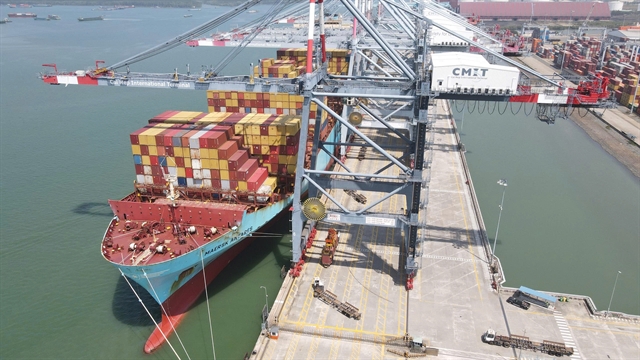
Among its terminals, Gemalink stands out as the largest in the country, covering 72 hectares with a capacity of 2.4 million TEU per year.
From July 2025, it is able to handle vessels up to 232,494 DWT following successful large-ship trials.
It is also investing in “green and smart port” technologies, including onshore power supply and digital platforms, to improve efficiency and reduce emissions.
Another major terminal, Cái Mép International Terminal (CMIT), with US$250 million in investment, has also been approved to accommodate vessels of over 214,000 DWT.
With advanced digital applications, CMIT achieves a handling productivity of 130 containers per hour, among the highest in the world.
Cao Hồng Phong, deputy general director of Gemadept–Terminal Link and Chairman of the Bà Rịa–Vũng Tàu Logistics and Port Association, said that Tân Phước is increasingly recognised as a regional and global transshipment hub thanks to the presence of the world’s largest shipping lines at Cái Mép–Thị Vải.
Complementing its port system, Tân Phước also hosts large-scale industrial parks, notably the 1,046-hectare Phú Mỹ 3 specialised industrial park, alongside Phú Mỹ 2 and Cái Mép IPs, creating an integrated supply chain for logistics and supporting industries.
“Looking beyond logistics, Tân Phước is also developing into a model smart urban area, with plans to establish an Intelligent Operations Centre (IOC) to improve urban management, public services, and quality of life for residents.”
Under the city’s 2025–30 development plan with a vision to 2045, Tân Phước is designated as a core area within the international seaport–petrochemical–logistics economic zone, and is expected to connect with Cần Giờ in a future free economic zone.
The proposed Cái Mép Hạ Free Trade Zone, designed under a new-generation FTZ model combining seaports, logistics, industry, urban services, and an international airport, is also expected to be developed in Tân Phước, boosting trade, investment and competitiveness.
Huỳnh Trung Sơn, chairman of Tân Phước Ward’s People’s Committee, said, with direct connectivity to deep-water ports, industrial parks, and major transport corridors, Tân Phước has ideal conditions to become an international logistics centre contributing to the city’s long-term vision.
Gathering all the key elements — international-standard seaports, large industrial parks, an attractive investment environment, and the vision of a smart city — Tân Phước is firmly on its way to becoming a leading hub for logistics, industry, and trade in the region. — VNS


